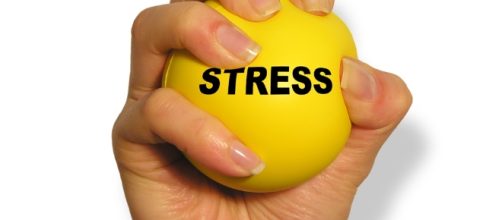Mental issues have been a concern in America for a long time, and things aren't necessarily getting any better. How are we adapting?
Fidget Toys have come a long way since the Stressball first came out in 1988. The original idea was to let off steam without collateral damage such as thrown objects and broken property. The original Stressball even had a technology aspect that made a sound like breaking glass when squeezed.
Like today's stress balls, though, the original was made of polyurethane foam that was fun to squeeze and bounced back easily (without breaking anything).
Research showed that the Stressball didn't actually decrease heart rate or blood pressure, but forcing the muscles to tense and relax through repetitive squeezing eventually brought on relaxation and emotional awareness.
Therapy in the form of toys
Today, stress-relieving gadgets come in a variety of different forms, and can be used for a variety of different things. Some are "alerting fidgets"; these are designed to keep children, teens, and adults alert in hum-drum situations or wake up their brains and fingers before tedious writing or typing tasks.
One of the more common types of fidget toys are designed to keep busy bodies and minds steady, with particular emphasis on textures to stimulate the senses.
Other specialized fidget toys include "foot fidgets", "hair puller skin picker fidgets", and "touchy-feely tactile fidgets". There are even silent fidget toys specifically designed to be discreetly used by children in classrooms.
The emergence and increasing popularity of these types of toys point to society's move back into a home remedy era.
A search for "home remedies" on Bing will pull up 35,100,000 results ranging from hair care to snore prevention; "how to control anxiety naturally" will give you 270,000 results.
People are getting tired of relying on medicine. The desire to fix things ourselves is growing in all areas of life. Part of that is seeking help for physical and mental struggles outside of a pill bottle.
Such help includes herbal teas, essential oils, meditation, and fidget toys.
The newest anxiety toys
Two of the newer anxiety toys sweeping the nation right now are the fidget spinners and cubes. Finger Spinners, for example, are designed to get rid of nervous energy through a variety of different spinning toys. Anxiety aids like this were once frowned upon in public places, thought to be unnecessary distractions for others, but more recent studies have proven that such toys actually do help with focus issues.
To compromise, today's fidget toys such as Finger Spinners have a certain set of design specifications that include silence and durability. Despite the fact that they're called fidget toys, the companies that are developing them are not playing around at all.
Another example of a new fidget toy in circulation today is the Fidget Widget/Fidget Cube, a focus cube with six sides each containing different mechanisms to stimulate fine motor skills. On one side is a button-like knob that can be twisted, jostled, and pushed in. On another are five raised dots, like on a die, that can each be punched like a remote button.
Another side contains a rolling metal ball and three gear-like turning wheels. Another has a spinning circle, another has a light switch mechanism, and the last has a thumb-sized indention for smooth rubbing and holding. The whole thing weighs about 1.4oz. and each side measures 1.3in.
Designed to be more for adults, these newer fidget toys have sleek designs and durable mechanisms.
They can double as alertness and de-stress tools, depending on how they are used.
The six sides of tactile surfaces give cube users a variety of options for getting rid of nervous energy or promoting steady concentration, while the simple nature of the spinners gives users a more discreet device that allows for personal innovation and freedom of use.
Conclusion
From multi-use foam to specific anxiety-based technology, society has come a long way in how we deal with stress. The original goal may have been based on relieving muscular tension, but today's goals are about stimulating the mind and the body.
This emerging focus on developing fine motor skills to hone attention, emotional awareness, and calmness has led to the creation of new anxiety toys.
What once may have been thought of as a silly distraction is now becoming an integral part of daily life for some people, and is being taken more seriously by others. It is a sophisticated step for society, and a productive step for those who suffer from focal or anxiety issues.


